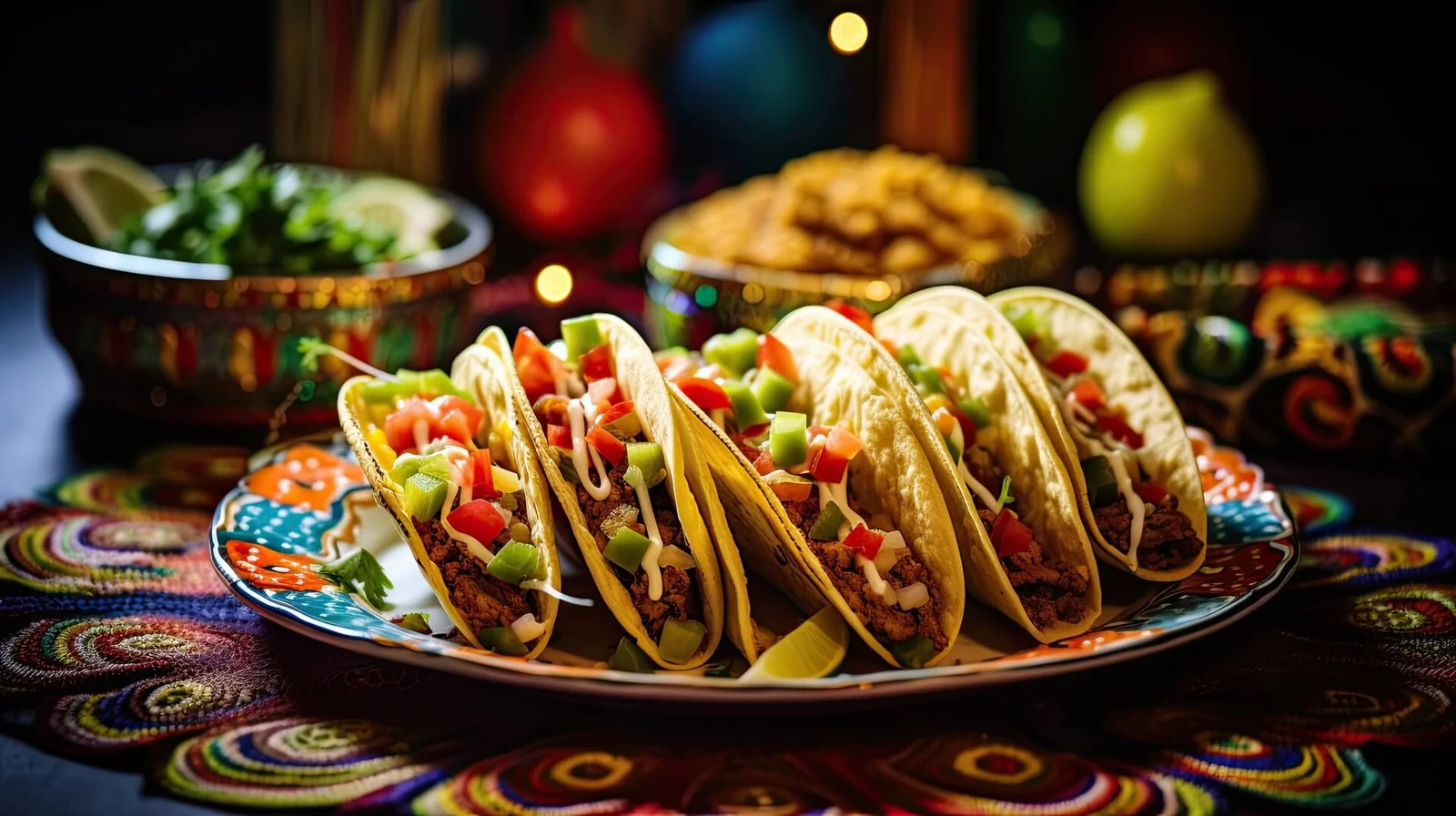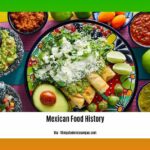Prepare to embark on an amazing culinary journey as we explore the hidden gems of Mexican food. Contrary to the common assumption that it’s all about tacos, Mexican cuisine is a vibrant tapestry of flavors and traditions, with captivating stories to tell. From its ancient Mayan roots to the fusion of Spanish influences, this adventure will take us beyond the familiar and into a world of tantalizing discoveries. Get ready to savor lesser-known dishes and gain a newfound appreciation for Mexico’s rich culinary heritage. Buckle up and join us as we venture into the uncharted territories of Mexican gastronomy, where every bite is a revelation that will leave your taste buds dancing with delight!
Fun Facts About Mexican Food
Let’s be real, who doesn’t love a good fiesta of flavors? Mexican food is more than just tacos and burritos (though, let’s be honest, those are pretty amazing). It’s a vibrant tapestry woven from centuries of history and culture.
Ever heard of a country with a serious corn obsession? That’s Mexico! They’ve got a whopping 59 types of native corn, each boasting unique flavors and textures. We’re talking a rainbow of corn, from the classic yellow to vibrant blues and reds. And get this, the corn we enjoy today actually descended from a special Mexican variety called teosinte! Talk about ancient grains!
Speaking of treasures, Mexico is like a culinary treasure chest. This is where the world received the gift of chocolate – rich, dark, and oh-so-delicious. And let’s not forget the humble tomato, adding its bright tang to dishes worldwide. But hold on, things are about to get spicy! Mexico is a haven for chile peppers, with a spectrum of heat that can make you sweat or just add a delightful kick.
Now, prepare to be amazed. You won’t find these ingredients in your average grocery store. Mexican cuisine embraces the wild side, incorporating exotic treats like iguana and rattlesnake. Yep, you read that right! These ingredients add a unique, adventurous flair that embodies the spirit of Mexico’s natural wonders.
So next time you dig into a plate of Mexican goodness, remember, you’re not just enjoying a meal. You’re experiencing a fascinating journey through history, culture, and a whole lot of flavor!
Why Is Corn So Important in Mexican Cuisine?
Corn isn’t just food in Mexico; it’s woven into the cultural and religious tapestry of the nation, making it a symbol of Mexican identity itself. Think of it like rice in Japan or grapes in France – it’s more than just an ingredient.
Revered as a heavenly gift for over 8,000 years, corn holds a sacred place in Mexican culture, connecting people to their ancestors and deities. This deep-rooted reverence is evident in the vast fields of corn that blanket over a third of Mexico’s landmass, yielding an impressive 27,000 tons annually.
But the importance of corn goes beyond its cultural significance. As a culinary cornerstone, corn is the primary ingredient in traditional dishes like tortillas, tamales, pozole, and atole. Its versatility extends beyond sustenance, finding its way into syrup, oil, flour, and starch, showcasing its ubiquitous role in the Mexican diet.
What Are Some Unique Mexican Ingredients and Dishes?
Let’s dive into some more of those awesome and unusual ingredients found in Mexican cooking!
Nopal (Prickly Pear Cactus) – Yep, you read that right, cactus! Nopal is super versatile, showing up in everything from fresh salads to hearty soups and even tucked into tacos. It’s got a unique taste and it’s packed with nutrients – no wonder it’s a Mexican food star!
Chapulines (Grasshoppers) – Ready for adventure? Chapulines are a traditional Mexican snack that brings the crunch. They’ve got a nutty flavor that’s taken to the next level when seasoned with zesty lime and a kick of chili powder.
Escamoles (Ant Larvae) – Now this one is for the truly adventurous eaters! Considered a delicacy in Mexico, escamoles have an earthy, slightly nutty flavor. They’re often sautéed with butter, garlic, and onion for a truly unique dish.
Huazontles (Corn Husk Shoots) – Remember those corn husks you peel back from an ear of corn? Well, the young shoots from those husks are called huazontles, and they’re a pretty big deal in Mexican cooking. They’ve got a slightly bitter taste and a nice crunch, making them perfect for filling quesadillas or adding texture to soups.
Flor de Calabaza (Squash Blossoms) – These delicate, edible flowers come from the squash plant and they’re a real treat. They have a slightly sweet, delicate flavor and are often stuffed with cheese or meat, dipped in batter, and fried to crispy perfection.
Key Takeaways:
- Mexican cuisine is a delicious adventure, full of unique and flavorful ingredients.
- Nopal, chapulines, escamoles, huazontles, and flor de calabaza are just a few examples of ingredients that make Mexican food so special.
- These ingredients add amazing and unexpected flavors and textures to all sorts of dishes.
How Has Mexican Cuisine Been Influenced by Other Cultures?
Mexican cuisine, a vibrant fusion of Mesoamerican, European, and global influences, offers a rich culinary tapestry that reflects its fascinating history. To truly understand its depth, we must delve into the layers of its past.
Long before the arrival of Europeans, ancient Mexican food culture, with influences from the Mayan and Aztec civilizations, laid the foundation for the flavors we know and love today. Corn, beans, chiles, and countless other indigenous ingredients formed the bedrock of their diet, shaping the culinary landscape for millennia.
The arrival of Spanish conquistadors in the 16th century marked a turning point in Mexican cuisine. With them came European culinary practices and a wave of new ingredients, including cheese, pork, and wheat, which were quickly incorporated into traditional dishes, creating a unique and delicious fusion of flavors.
Over the centuries, waves of immigrants from around the world, including those from France, Germany, and the Middle East, have left their mark on Mexican food. The French influence can be seen in the abundance of pan dulce – those delightful sweet breads perfect for accompanying a cup of coffee. German immigrants contributed to the burgeoning beer scene in Mexico. Even the Middle East has left its mark, as seen in dishes like al pastor, that mouthwatering marinated pork seasoned with spices and a touch of pineapple, which has roots in Lebanese shawarma.
One of the most remarkable aspects of Mexican cuisine is its dedication to fresh ingredients. Vibrant salsas burst with flavor, fresh tortillas are made from heirloom corn, and juicy fruits are incorporated at the peak of ripeness. This emphasis on quality ingredients contributes to both the vibrancy and nutritional value of Mexican food.
And here’s a fun fact: that Caesar salad you order at restaurants? It’s actually a Mexican invention! Created in Tijuana by an Italian immigrant named Caesar Cardini, this classic combination of romaine lettuce, crunchy croutons, Parmesan cheese, and creamy dressing has become a beloved appetizer worldwide.
So, the next time you sit down to a Mexican meal, remember that you’re not just enjoying a meal but embarking on a delicious journey through time – a testament to ancient civilizations, cultural exchange, and the creativity of countless cooks who have poured their hearts into each dish.
Did you know that fun facts about Mexico City has the largest primary pyramid in the world?
















Comments are closed.